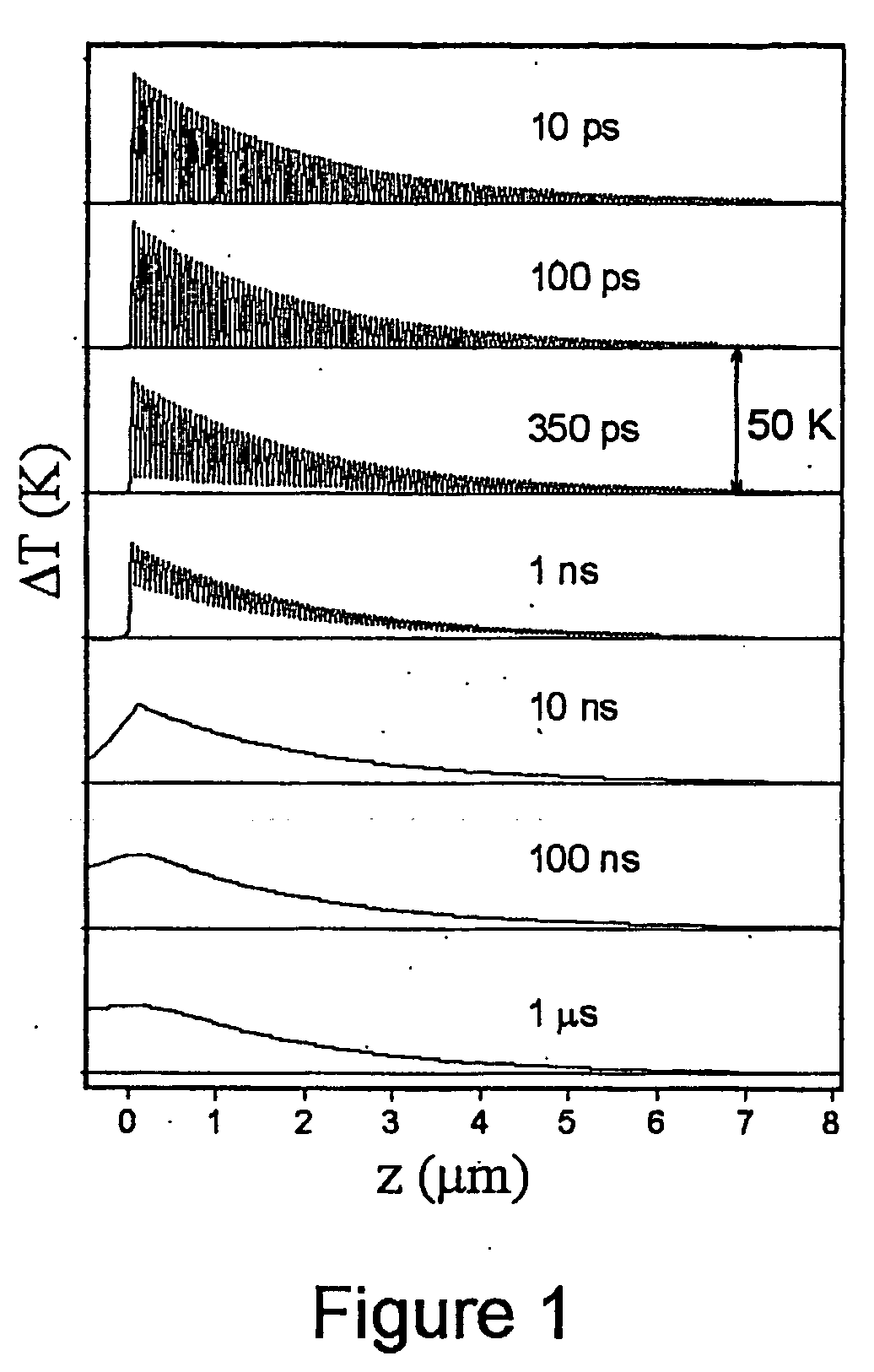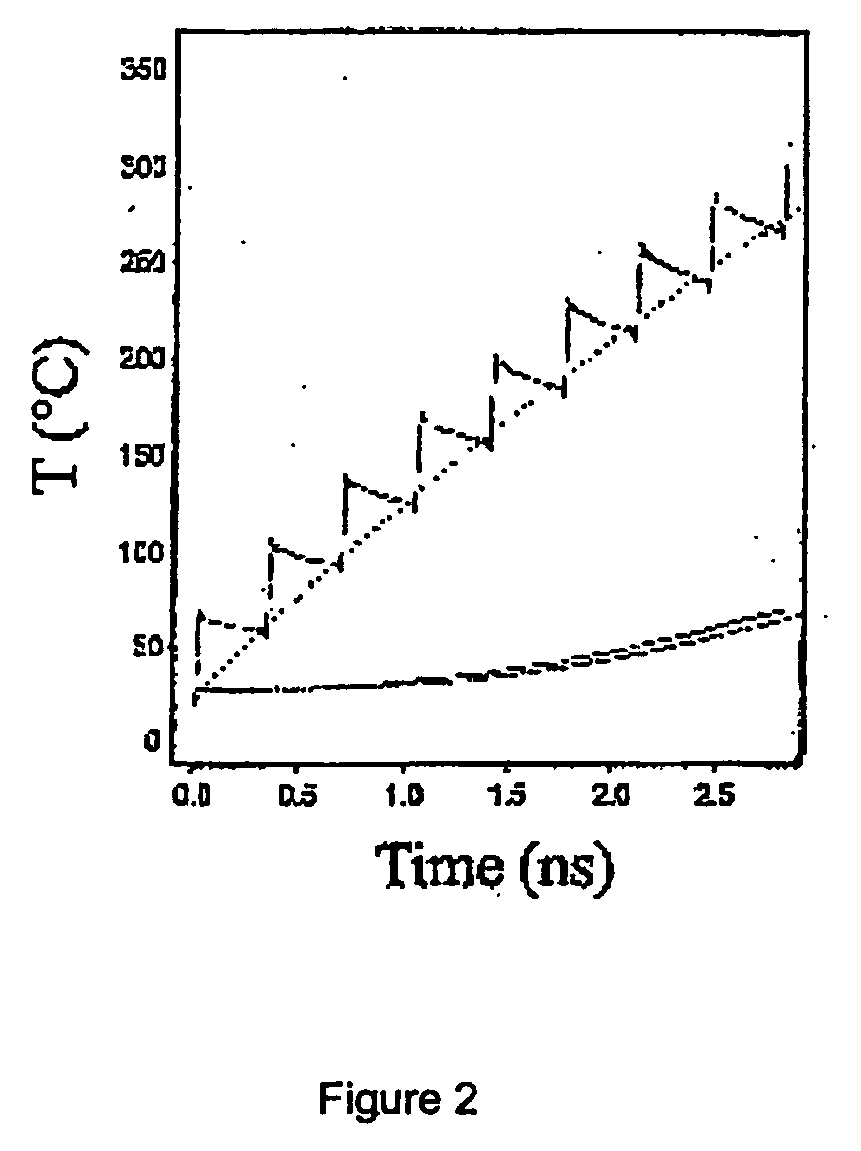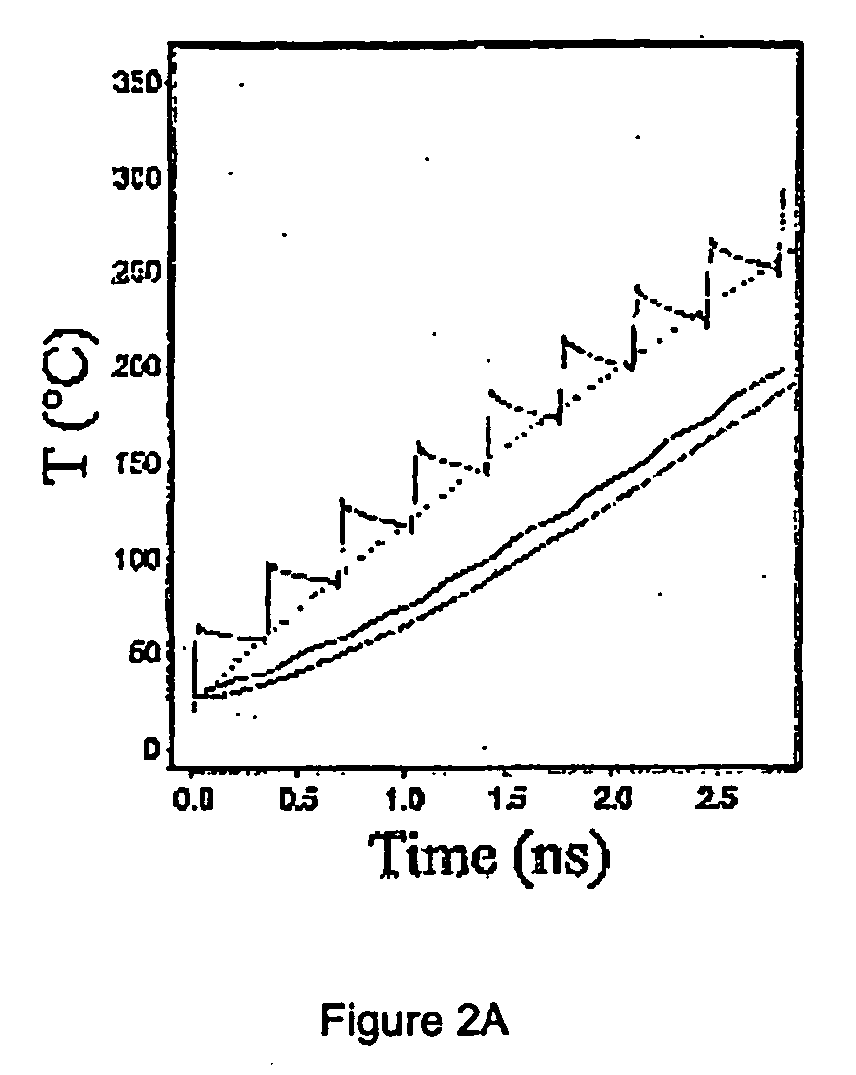Method and apparatus for infrared tissue ablation
- Summary
- Abstract
- Description
- Claims
- Application Information
AI Technical Summary
Benefits of technology
Problems solved by technology
Method used
Image
Examples
example 1
Results and Discussion of Laboratory Example 1
A. Laser Heating and Thermal Diffusion
[0073] FEL wavelengths of interest include 3.0 μm, 3.4 μm, 6.0 μm and 6.1 μm. One μJ per impulse is delivered to a Gaussian spot of 50 μm (e−2 radius) and the temperature is tracked on the symmetry axis. FIG. 1 summarizes the thermal response to a single impulse. Distinctive patterns in temperature are evident from 10 ps through 1 ns due to the differences in absorption for protein and water in this laminar system. Interlayer diffusion and an indication of a surface enhancement are evident on the nanosecond time scale. By 10 ns the temperature profiles are independent of laminar structure. Exponential decay in z due to Beer's law is evident at all times.
[0074] It is instructive to introduce some physical concepts to interpret this case before proceeding to consideration of a train of impulses. As shown in FIG. 1, remnants of the layer specific absorption patterns remain until several nanoseconds af...
experiment 1
Conclusions from Laboratory Experiment 1
[0085] Thermal diffusion in a laminar system representative or cornea was studied, which was heated by a Mark III FEL at rates that satisfy the criterion for superheating of saline. At these temperatures and pulse durations, the model predicts no direct photothermal breaking of chemical bonds.
[0086]FIGS. 5A-5C disclose a range of intensities and pulse durations that meet the criteria for a single pulse to ablate tissue at three infrared wavelengths: FIG. 5A depicts conditions for a wavelength of 3.00 μm; FIG. 5B depicts conditions for a wavelength of 6.10 μm; and FIG. 5C depicts conditions for a wavelength of 3.40 μm. The criteria for thermal denaturation of protein, superheating saline to the critical temperature, and the heterogeneous nucleating density associated with superheating yield the sloped traces. The horizontal line represents the criterion for protein denaturation to precede vaporization. While the pulse duration nominally repres...
PUM
| Property | Measurement | Unit |
|---|---|---|
| Time | aaaaa | aaaaa |
| Time | aaaaa | aaaaa |
| Time | aaaaa | aaaaa |
Abstract
Description
Claims
Application Information
 Login to View More
Login to View More - R&D
- Intellectual Property
- Life Sciences
- Materials
- Tech Scout
- Unparalleled Data Quality
- Higher Quality Content
- 60% Fewer Hallucinations
Browse by: Latest US Patents, China's latest patents, Technical Efficacy Thesaurus, Application Domain, Technology Topic, Popular Technical Reports.
© 2025 PatSnap. All rights reserved.Legal|Privacy policy|Modern Slavery Act Transparency Statement|Sitemap|About US| Contact US: help@patsnap.com



